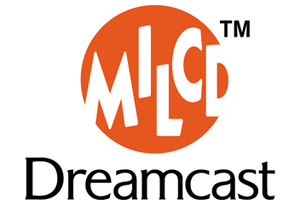MIL-CD
Music Interactive Live-CD (MIL-CD) is a digital optical storage format created by Sega. It allows code to be loaded on the Dreamcast via standard compact disc media, such as a CD-ROM or CD-R.
MIL-CDs consist of audio tracks before the track containing Dreamcast-bootable data. Custom MIL-CDs can also be created with a data track before the Dreamcast-bootable data track.
Official releases
There were eight official MIL-CD releases, distributed in Japan only, all of which were audio music CDs containing extra audiovisual content when loaded in a Dreamcast console.
Using MIL-CD to boot independent code on the Dreamcast
The MIL-CD could be used to allow the Dreamcast to boot code on a standard compact disc, without needing to use the proprietary GD-ROM (Gigabyte Disc) format that Sega used for Dreamcast games (as well as some arcade games with hardware based on the Sega Dreamcast and Microsoft Xbox).
The independent game development community discovered the MIL-CD releases and adapted them for their own code. The first demonstration of independently developed software intended for commercial sale was the GameShark CDX. This was the localized version of Datel's Action Replay CDX, as Interact had acquired the rights for release in North America. It was shown at the Consumer Electronics Show, which ran from January 6 to January 9, 2000.
The first non-commercial independent code to successfully run on the Dreamcast was achieved by the demo group Hitmen. Their A.G.E. demo, a technical demo for the Dreamcast that displayed stylized text, graphics, and music, premiered at the Mekka & Symposium 2000 convention in Fallingbostel, Germany on April 23, 2000. This demo was never released publicly, as it was developed using a custom coding library and required the Dreamcast to be connected to a host computer using a custom serial port adapter known as the Dreamcast Debug Handler.
The commercial PlayStation emulator, bleemcast!, was then demonstrated at the Electronics Entertainment Expo, or E3, which ran from May 11 to May 13, 2000. The Action Replay CDX became the first independent commercial release when it was released to retail on June 2, 2000. Marcus Comstedt, who would later become known for his Dreamcast ports of the Super Nintendo Entertainment System emulator SNES9x and the adventure game interpreter ScummVM, reverse engineered this disc and built his own library for the Dreamcast using the open-source GNU C compiler for the SH-4 processor. He wrote documentation detailing the process of booting code directly on the Dreamcast, and released a simple "Hello World" demo on June 20, 2000.
MIL-CD Piracy
At the same time the indie developers were reverse-engineering the MIL-CD format, software crackers discovered the loophole that was employed by the Action Replay CDX. A pirate group known as Utopia released a CD image intended to boot illegal game rips on June 22, 2000. This bootloader was quickly followed by a rip of the game Dead or Alive 2 on June 23, 2000. Due to the inability of their game rips to boot on their own, all of the early pirate releases required the use of their bootloader, which became known as the Utopia Boot CD. The bootloader itself was created by modifying the teapot demo that was included with the official Sega Katana library.
Other pirate groups soon released game rips in the form of self-booting images which would run on a Dreamcast directly after being burnt to a CD-R, eliminating the limitations of the Utopia Boot CD. Sega's GD-ROM format, which was meant to be a hindrance to piracy, was soon obsolete, as the only restriction towards playing illegal copies of Dreamcast games was now the slow connection speeds of most internet modems of the time.
